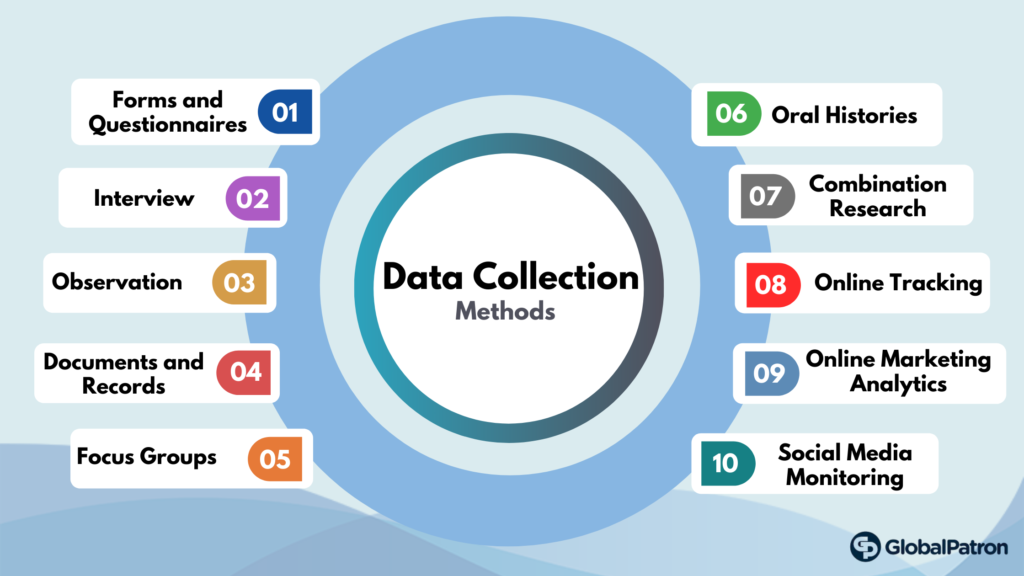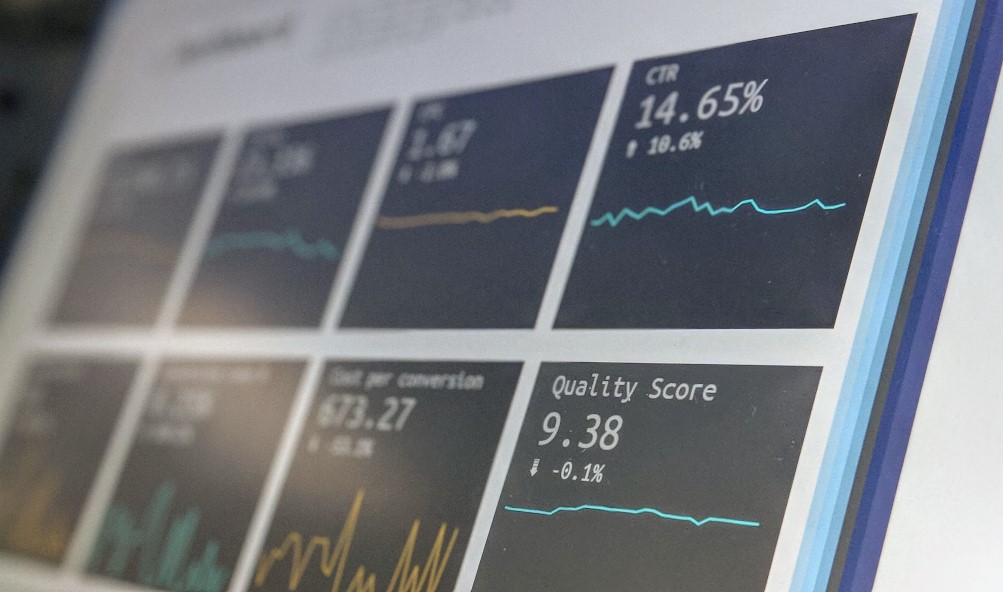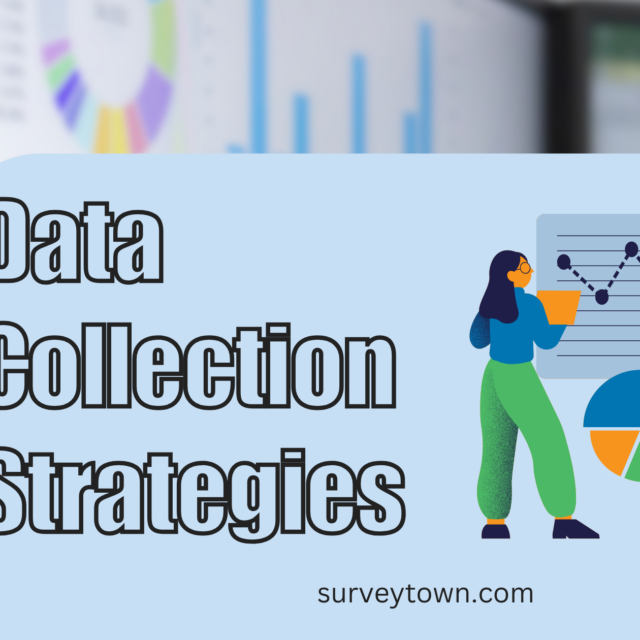As data collection experts, we know the power it holds in shaping decisions. Whether you’re a business owner, researcher, or individual seeking knowledge, accurate and reliable data is crucial. Data collection allows us to gather information and uncover valuable insights. It provides evidence-based knowledge that guides our actions and helps us make informed choices. Without proper data collection practices, we rely on assumptions instead of facts. Effective strategies rely on precise and dependable data. It reveals hidden trends and correlations that casual observation may miss. By analyzing data sets meticulously, we can create targeted approaches for superior outcomes.
In today’s fast-paced world overflowing with information, access to high-quality data is more important than ever before. With cutting-edge tools and techniques at your disposal, success in marketing research, social sciences studies, healthcare improvements, and policy-making decisions is within reach. Join us on an exhilarating journey into different methods of collecting data. Together, we’ll find the perfect strategy tailored to meet your needs!
Different Methods for Collecting Data: An Overview
As data collection experts, we understand the importance of choosing the right method to gather information. With numerous techniques available, each with its own pros and cons, it’s vital to make an informed decision based on your specific needs. In this section, we’ll give you a comprehensive overview of the most common methods so that you can confidently select the approach that best suits your requirements.

1. Surveys and Questionnaires: A Traditional Approach
Surveys and questionnaires have stood the test of time as reliable strategies in the world of data collection. This tried-and-true method involves gathering information from individuals through a thoughtfully crafted series of questions. Surveys can take various forms, including paper-based forms, online surveys, or even phone interviews.
Advantages:
- Wide Reach: Surveys offer an effective way to collect data from a large number of participants, making it an efficient strategy.
- Standardized Data: By utilizing standardized questions, surveys ensure that all respondents are answering the same set of questions. This allows for easier comparison and analysis.
- Anonymity: Participants often feel more at ease providing honest answers when their responses remain anonymous.
Disadvantages:
- Limited Depth: While surveys provide valuable quantitative data, they may not offer ample opportunities for qualitative insights or detailed explanations.
- Response Bias: Depending on how the survey is administered and who participates, there may be inherent biases that impact the accuracy and representativeness of the collected data.
- Lack of Contextual Understanding: Without direct interaction between researchers and participants, important contextual details may be overlooked.
To maximize the effectiveness of your survey or questionnaire:
- Keep it concise by focusing on essential questions that directly address your research objectives.
- Use clear language without jargon or technical terms that could confuse respondents.
- Pilot test your survey with a small group before distributing it widely to identify any potential issues or areas for improvement.
Remember that while surveys offer valuable insights, they should be used in conjunction with other data collection methods to gain a comprehensive understanding of your research topic.
Next, let’s delve into another method of collecting data: interviews.
2. Interviews: A Personal Touch
When it comes to gathering valuable insights, interviews offer a personal and engaging approach that goes beyond mere data collection. Through structured or unstructured conversations, this method allows for qualitative exploration of participants’ thoughts, feelings, and experiences.
Advantages:
- Rich and Detailed Information: Unlike surveys alone, interviews provide in-depth information that goes beyond quantitative data. They uncover nuanced details and personal perspectives that can greatly enhance your understanding of the topic at hand.
- Clarification and Deep Dives: Interviewers have the unique opportunity to clarify any ambiguous responses or delve deeper into specific topics based on individual participant’s answers. This ensures a comprehensive exploration of the subject matter.
- Tailored Questioning: The adaptability of interviews enables tailored questioning based on each participant’s responses. This personalized approach allows for a more focused investigation into areas of interest or concern.
Disadvantages:
- Time-Consuming and Resource-Intensive: Conducting interviews can be quite time-consuming, especially when dealing with numerous participants. It requires careful planning, scheduling, and coordination to ensure effective data collection within set timelines.
- Mitigating Interviewer Bias: Proper management is crucial to mitigate interviewer bias from influencing the results obtained through interviews. Training interviewers thoroughly on unbiased techniques is essential for maintaining research integrity.
In conclusion, interviews are an invaluable tool in qualitative research as they provide a personal touch that cannot be achieved through other methods like surveys alone. By engaging directly with participants through meaningful conversations, you gain rich insights into their thoughts and experiences, which can greatly inform your decision-making process.
3. Observation: A Direct Method
As experts in data collection strategies, we can confidently say that observation is a tried and true method for gathering valuable information. By carefully watching and recording behaviors, actions, or events, researchers can gain real-time insights into human behavior or natural phenomena.
Advantages:
- Real-Time Insights: Through observation, researchers have the unique opportunity to witness and record behaviors as they naturally unfold. This provides invaluable real-time insights into various aspects of our world.
- Unbiased Data: Unlike methods that rely on self-reporting or participant responses, observation eliminates potential biases stemming from subjective interpretations or memory recall.
- Non-Intrusive Approach: With observational methods, participants are not required to actively engage in surveys or interviews. This makes it particularly suitable for studying sensitive topics where individuals may be hesitant to disclose certain information.
Disadvantages:
- Limited Context: While observation offers firsthand data, it may lack contextual information about why certain behaviors occur. Researchers must carefully consider these limitations when drawing conclusions.
- Observer Bias: The mere presence of an observer can potentially influence the behavior being observed if not properly managed, leading to biased results.
- Time-Consuming Process: Depending on the scope of the study, observation can be time-consuming as researchers dedicate significant effort towards observing and documenting relevant behaviors.
To ensure accurate and reliable observations:
- Clearly define what needs to be observed before commencing the study.
- Thoroughly train observers on collecting consistent and unbiased data.
- Utilize standardized protocols for recording observations.
- Consider leveraging technology such as video cameras or specialized software for more precise measurements.
In conclusion, observation stands as a powerful method for collecting direct data across various fields, including psychology, anthropology, and environmental studies. With a deep understanding of its advantages and disadvantages coupled with best practices implementation, you will unlock valuable insights into human behavior or natural phenomena through this remarkable technique.
4. Experimentation: A Scientific Approach
When it comes to collecting data, experimentation stands as a formidable strategy that empowers researchers to uncover valuable insights through meticulous and systematic processes. In this section, we will delve into the world of experimentation as a scientific approach to data collection.
Advantages:
- Controlled Precision: Experimentation grants researchers the ability to exercise precise control over various factors and variables, enabling them to isolate specific effects. This precision leads to more accurate and reliable results.
- Unveiling Causal Relationships: By manipulating independent variables and closely observing their impact on dependent variables, experimentation allows for the establishment of causal relationships between different factors.
- Enhanced Credibility: Experiments can be replicated by other researchers, bolstering the credibility and validity of the findings.
Disadvantages:
- Limited Applicability: Due to their controlled nature, often taking place in artificial settings, experiments may have limited generalizability when applied directly to real-world situations.
- Ethical Considerations: Certain experiments may raise ethical concerns when they involve manipulating certain variables or exposing participants to potentially harmful conditions.
- Resource-Intensive Endeavor: Conducting experiments demands significant investments in terms of time, resources, and expertise compared to other methods.
When determining whether experimentation is the optimal strategy for your needs, consider these crucial factors:
- Assess if your research question necessitates establishing cause-and-effect relationships or testing hypotheses that can only be addressed through experimental methods.
- Determine if you possess access to essential equipment, funding opportunities, personnel with relevant expertise, along suitable facilities required for effective experiment execution.
- Take into account whether you have ample time at your disposal since experiments typically entail careful planning and implementation phases alongside diligent data collection, analysis, and interpretation stages.
To ensure successful experimentation:
- Prioritize defining your research objectives and hypotheses before designing your experiment.
- Pay meticulous attention to sample size determination in order to achieve statistically significant results.
- Employ randomization techniques when assigning participants or subjects into different groups, thereby minimizing bias.
- Meticulously document your experimental procedures and protocols to ensure reproducibility of the findings.
- Utilize appropriate statistical methods for data analysis, enabling you to draw meaningful conclusions.
Experimentation serves as a valuable tool within the data collection process, particularly when aiming to establish causal relationships or test specific hypotheses. However, it is crucial to carefully weigh the advantages and disadvantages of this method against your research goals and available resources before making a decision.
5. Online Data Collection: The Digital Age
Welcome to the digital age, where online data collection has revolutionized the way researchers gather valuable insights. With cutting-edge technology at our fingertips, we now have an array of strategies and techniques that make collecting data online a breeze. In this section, we will delve into the world of online methods for data collection and explore their benefits and drawbacks.
Advantages:
- Expansive Reach: Say goodbye to geographical limitations! Online data collection allows you to connect with a vast audience across different locations effortlessly. With just a few clicks, surveys or questionnaires can be distributed far and wide.
- Cost-Effective Solutions: Bid farewell to printing costs and fieldworker expenses! Conducting research online eliminates these financial burdens, making it an incredibly cost-effective option.
- Time Efficiency: No more scheduling conflicts or time-consuming logistics! Online surveys grant respondents the freedom to complete them at their convenience, saving precious time for both parties involved.
- Real-Time Insights: Harness the power of real-time analytics! Many online platforms offer instant analysis and reporting features that allow researchers to dive into collected data immediately.
Disadvantages:
- Limited Control Over Respondents: Unlike face-to-face interviews or observations, where researchers have more control over participant selection, online surveys rely on self-selection by respondents who may not accurately represent your target population.
- Potential Bias Concerns: Beware of response bias lurking in cyberspace! Participants might rush through questions or provide inaccurate information due to a lack of accountability when completing online surveys.
- Technical Hurdles: Prepare for potential technical glitches along the way! Participants may encounter connectivity issues or compatibility problems with certain devices while attempting an online survey.
- Missing Personal Touch: Embrace technology but don’t forget about human connection! Online methods lack the personal interaction provided by face-to-face interviews or observations during research endeavors.

Despite these challenges, online data collection remains a powerful and efficient method for gathering insights from large populations. To make the most of this approach, consider the following tips:
- Explore various survey platforms and data collection tools available to find one that aligns with your research requirements and offers essential features.
- Engage participants with visually appealing surveys that are easy to navigate. By creating an enjoyable experience, you can boost response rates significantly.
- Safeguard participant information at all costs! Select platforms that prioritize data security by implementing encryption measures and secure storage options.
In conclusion, online data collection methods offer researchers unparalleled advantages in terms of reach, cost-effectiveness, time efficiency, and real-time analysis capabilities. However, it’s crucial to acknowledge potential limitations such as limited control over respondents and possible bias concerns. By carefully considering your research objectives while choosing reliable platforms that ensure data security, you can unlock the full potential of online data collection for your projects.
Choosing the Right Method for Your Needs
When it comes to collecting data, selecting the right method is absolutely crucial. It can significantly impact the quality of your collected data. To help you make an informed decision, here are some important factors to consider:
- Research Objectives: Start by clearly defining your research objectives. What specific information do you need? By understanding your goals, you can determine which method will best align with your needs.
- Type of Data: Consider whether you require quantitative or qualitative data. Quantitative data involves numerical measurements and statistical analysis, while qualitative data focuses on subjective experiences and opinions. Each type requires different techniques for collection.
- Target Population: Identify who you want to collect data from – individuals, groups, or organizations. The characteristics of your target population will influence which method is most effective in reaching them.
- Available Resources: Assess the resources at your disposal – time, budget, and personnel included. Some methods may require more extensive resources than others.
- Accessibility: Determine how accessible your target population is for each method under consideration. For example, if conducting an online survey but many potential respondents lack internet access, this could skew your results.
- Ethical Considerations: Take into account any ethical considerations associated with certain methods, such as interviews or observations that involve direct interaction with participants.
- Cost-Effectiveness: Evaluate each method’s cost-effectiveness based on its ability to provide accurate and reliable results within budget constraints.
Expert Tips for Selecting the Most Effective Method:
- Conduct a pilot study before implementing a large-scale project to test out various techniques.
- Seek advice from experienced experts in the field who have worked on similar research projects.
- Consider combining multiple methods to gain a comprehensive understanding of your topic.
- Stay updated with new tools and techniques, regularly reviewing and updating your chosen methodology.
- Be flexible and open to adjusting your approach based on the unique needs of your research.
Remember, choosing the best data collection method is essential for obtaining accurate and meaningful results. By carefully considering these factors and following expert advice, you can ensure that your strategy aligns perfectly with your research objectives, providing valuable insights every step of the way.
Ensuring Data Quality and Integrity
Without reliable and accurate information, any analysis or decision-making process can be compromised. Allow us to share some valuable tips that will help you maintain the highest standards when collecting data.
- Use standardized measurement tools: Consistency is key to maintaining high-quality data. Consider using standardized measurement tools whenever possible to ensure comparability across different sources and studies.
- Train your team effectively: If you are working with a team of researchers or interviewers, invest time in providing them with comprehensive training on proper data collection procedures. This includes familiarizing them with ethical guidelines, emphasizing confidentiality protocols, and stressing the importance of accurate record-keeping.
- Implement robust quality control measures: To safeguard against errors or inconsistencies during the data collection process, establish regular quality control measures such as double-checking responses for accuracy or conducting periodic audits to identify potential issues.
- Validate collected data through multiple means: Depending on the nature of your research project, consider validating collected data by cross-referencing responses from different sources or conducting follow-up interviews for clarification purposes. This ensures greater reliability and enhances confidence in your findings.
- Thoroughly examine datasets for anomalies: During the analysis phase, carefully scrutinize collected datasets for outliers or anomalies that may significantly impact your results. Identifying and addressing these issues early on will help ensure the accuracy and validity of your conclusions.

